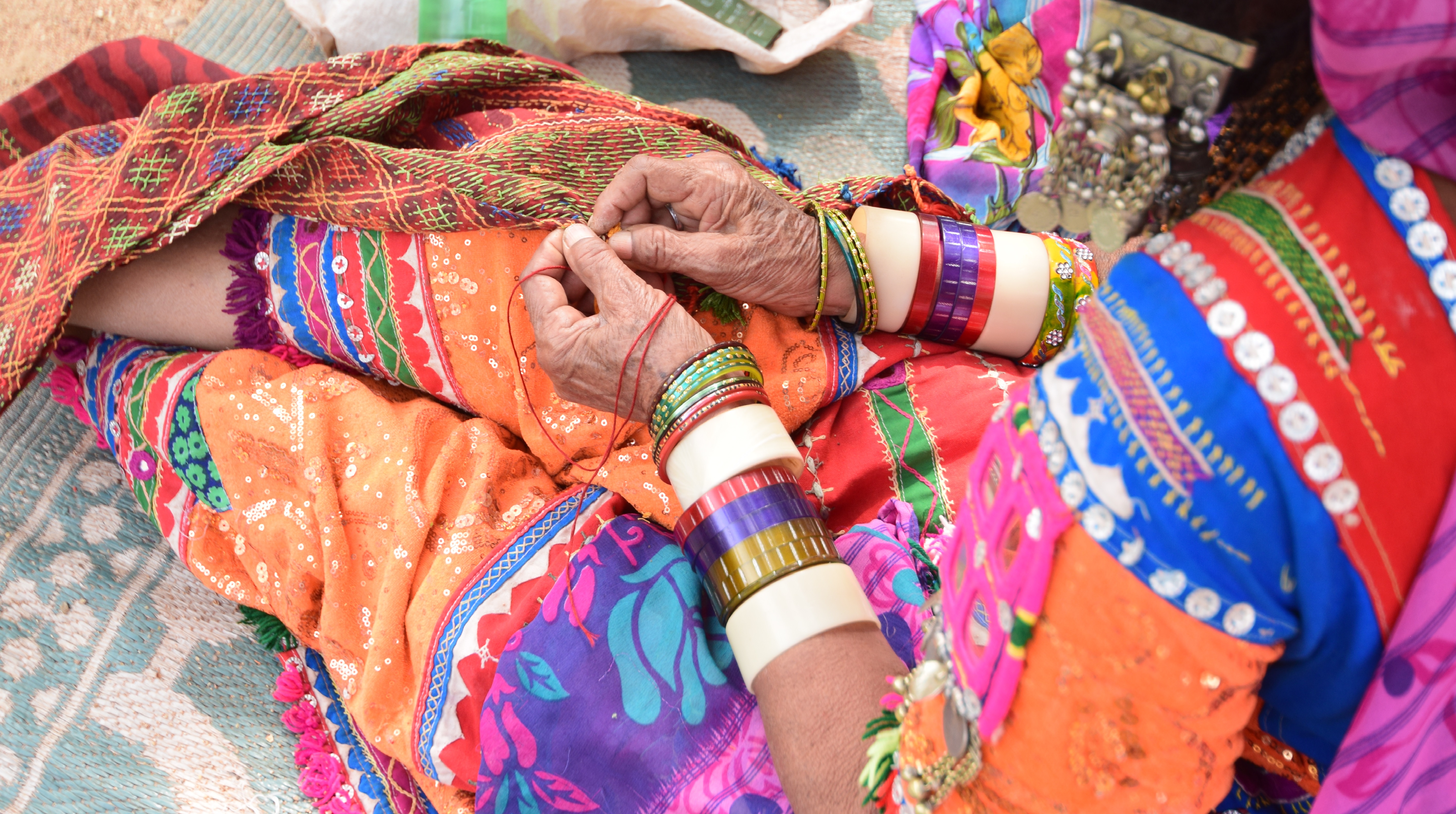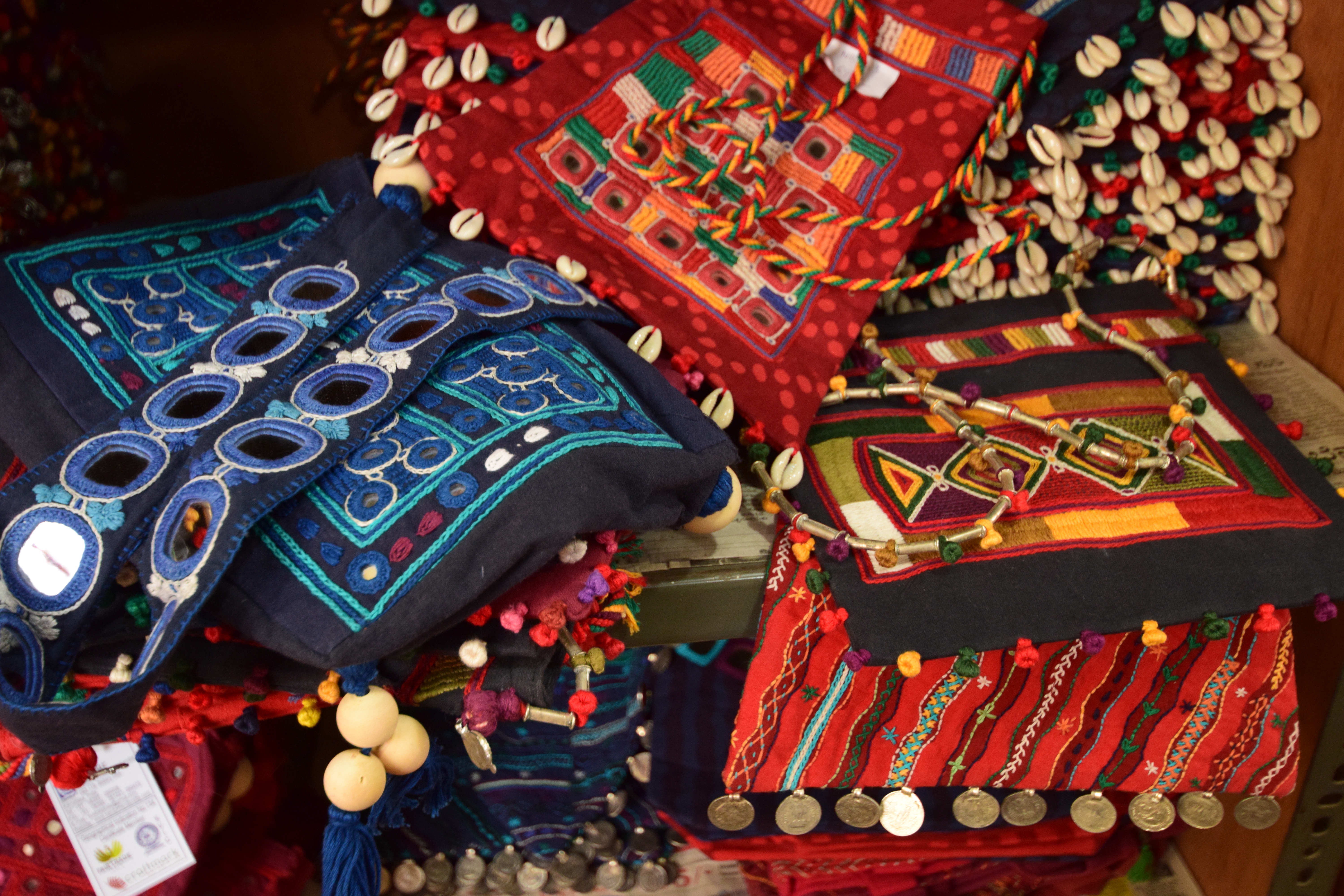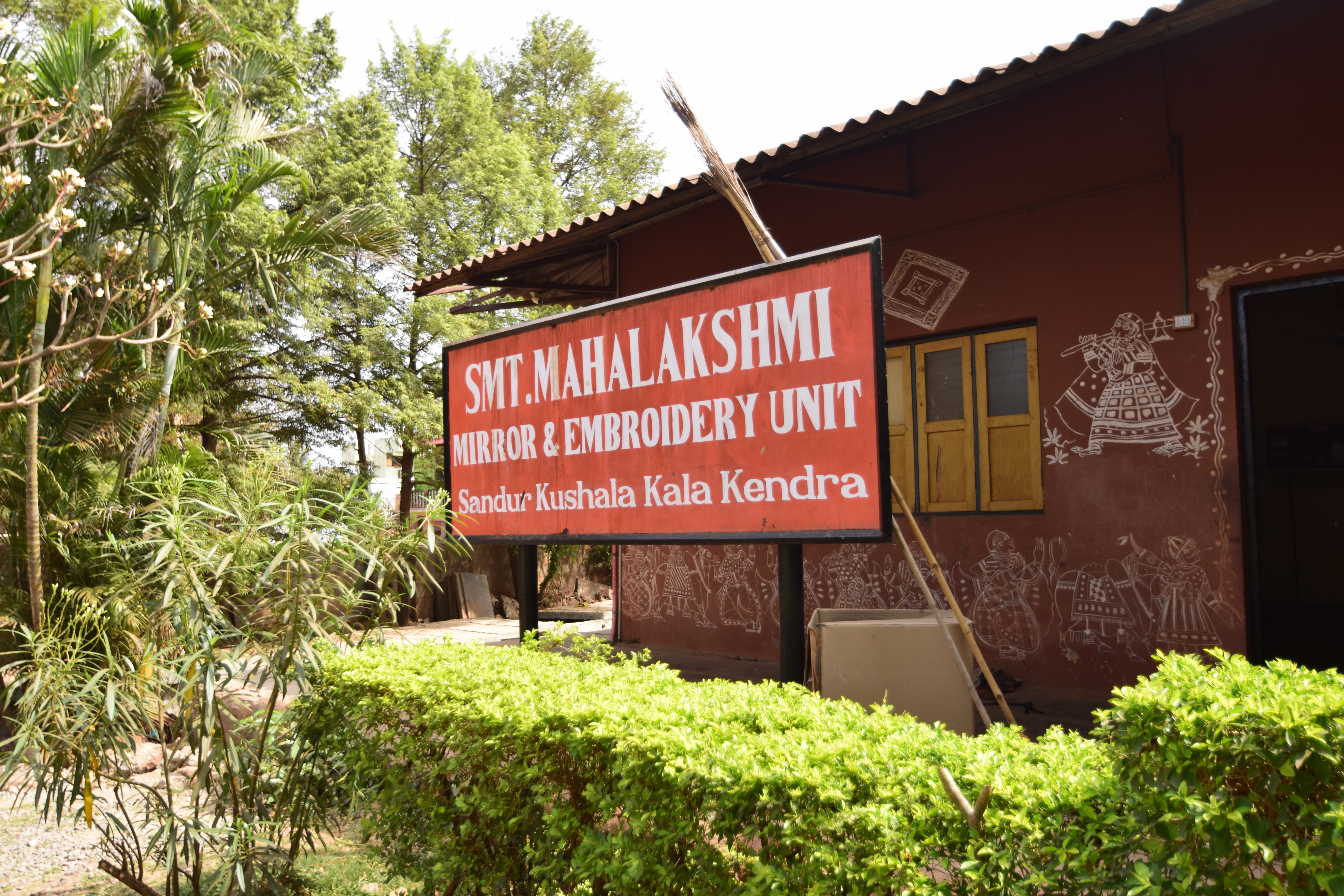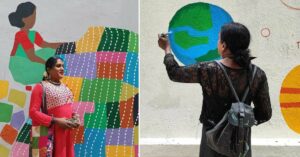TBI Blogs: An Art Centre in Karnataka’s Sandur Is Providing Livelihoods While Fostering the Dying Lambani Art
The Sandur Kushala Kala Kendra is an art center in Sandur working towards bringing national and international recognition to the traditional Lambani art. This organization markets the Arts & Crafts made by the women in local villages.

The Sandur Kushala Kala Kendra is an art center in Sandur working towards bringing national and international recognition to the traditional Lambani art. This organization markets the Arts & Crafts made by the women in local villages.
Green valleys encompassed by spectacular hills deposited with large mines of Manganese and Iron Ore, the exuberant forests with colourful trees, the gently flowing streams, and the enchanting lands—this would be the best way to describe Sandur, located in southern India. Mahatma Gandhi described this place as an “Oasis” during his visit in the early 1930s. Dazzled by the beauty of Sandur, he quoted, “See Sandur in September” rightly.
This dreamland of shimmering streams post-monsoon, with fresh air wafting across the fields, and the music of the meadows and the whispering winds, is also home to the languishing Lambani art. The vibrant tribal art form is believed to have descended from Roma gypsies of Europe, who migrated into the deserts of Rajasthan in North India thousands of years ago.
Later, they continued their voyage to the Southern states of India, including Karnataka.

Lambanis, who originally came from Marwar, now reside mostly in Southern and Middle India. Their ancient mode of dressing is the most colourful, with a unique glare and glitz. The distinctive features of the art are mirrors, shells, coins, and embroidery craft, which they use mostly to make their own traditional dresses. There are different types of complex tangles and stitches on brightly coloured/dyed cotton fabric, usually red and blue. Lambani art is famous all over the world, with flamboyant bed sheets, cushion covers, wall hangings, and carry bags being exported in large quantities.
However, the tribe still struggles to make a living in their few villages around North Karnataka.

This diminishing art is worthy of the nation’s pride. A handicraft centre, Sandur Kushala Kala Kendra (SKSS), was set up by Sandur Manganese and Iron Ore Limited (SMIORE) in 1984 to work towards bringing national and international recognition to the traditional Lambani art and other crafts.
The cottage industry Smt. Mahalakshmi Mirror & Embroidery Unit is where the lambani-style handicrafts, khadi spinning and weaving, cane furniture making, and stone artwork take place. The founders named this unit after Mahalakshmi, a teacher who noticed the art by the women in the villages.
The Royal Ghorpade family brought her idea of setting up this platform for lambani women to life.

This unit is mostly run by the women, where each person takes the responsibility of a group of artisans from the local villages and guides them about the design requirements, based on the orders from the market. SKSS supplies the raw material, like dyed cloth, threads, and various other accessories, to the women artisans.
They create magic with their applique patchwork and thread embroidery with mirrors, shells, wooden beads, coins, and other tiny metallic jewelry to add more shine and elegance to the fabric.

The mirror work and intricate thread work, with the glitter and charm of the lambani style, are spectacular. The products include exquisite purses, mobile pouches, dresses, waist belts, salwar dupatta, heavily embroidered carry bags, sarees, etc. There are also bed and cushion covers, and wall hangings, with the signature flashy pieces and intricate needlework.
The artisans here also engage in Cotton/Khadi spinning and weaving.

The enormous effort of the SKSS to empower the Lambani women and their art is worth applauding. The organisation helps in the marketing and sale of their masterwork. Besides paying remuneration to the artisans, SKSS also provides them with daily food rations and other benefits.
For more information, reach out to SKSS via email. Visit Interlude’s website to read about other unique Indian arts, such as Pattachitra painting.
Like this story? Or have something to share? Write to us: [email protected], or connect with us on Facebook and Twitter.
NEW: Click here to get positive news on WhatsApp!
This story made me
-
97
-
121
-
89
-
167
Tell Us More
We bring stories straight from the heart of India, to inspire millions and create a wave of impact. Our positive movement is growing bigger everyday, and we would love for you to join it.
Please contribute whatever you can, every little penny helps our team in bringing you more stories that support dreams and spread hope.


















